Track Tested: 2012 Volvo S60 T5

When our own Michael Karesh reviewed Volvo’s entry-level entry-luxury aeroback, he advised TTAC readers that the optional Dynamic Package was “…a must for anyone who cares about driving.” Hey! I care about driving! Trouble is, the rental companies don’t.
As some of you know, I spend a dozen or so weekends every year doing driver coaching with various organizations. My favorite among the miscellany of groups optimistic or stupid enough to let me endanger their students is TrackDAZE. I had agreed to coach at their Summit Point Shenandoah event, but the froglike little Korean coupe I’d hoped to drive at the event fell through. My Boxster was making some groaning noises, so I decided to source an Altima or similar from a rental company for the trip.
Imagine my surprise when I had the chance to bump up to a Volvo for five dollars a day extra! This, incidentally, would be a compelling argument if Volvo made it directly to the American people: “A nice Camry is $28,000. A nice Volvo is $35,000. That’s $140 a month extra in payments, or basically five dollars a day. For five dollars a day extra, wouldn’t you rather have a Volvo?” Sure you would, at least in the short term — and sure I did.
Shenandoah is an 850-mile round trip for me. During that time, the S60 was all of these things:
- Noisy. As a Town Car driver, I’m a bit spoiled quiet-wise, but a brief spin in an Accord afterward confirmed it: this little fellow is noisy, and it’s mostly wind noise. How ironic, because the car’s regrettably Civic-esque suppository-shape is theoretically a product of aerodynamics. It sure isn’t a product of wanting to look expensive.
- Economical. I saw 31mpg in mixed freeway/two-lane driving, rarely below 80mph, not consciously conserving fuel in any way. Impressive.
- Easy to operate Everything from the iPod integration to the seat controls is intelligently done and quite convenient to operate. The climate control area looks a bit dopey but it works.
- Not super well-equipped. No nav, no heated seats, no boomin’ system, no gimmicks at all, really. Other than leather seats, I didn’t see any equipment that you wouldn’t get in an Accord LX.
- Nice and quick on the road. It’s about as fast as you could want for merging into traffic, making it to a “hole” in the next lane, and whatnot. I figure it’s about as quick in a straight line as an ’88 Corvette or a new Camry V-6.
I’m not actually sure what the selling point of this car is, now that I’ve mentioned the Camry V-6. It’s not as big or roomy as the transplant mid-sizers. It’s no faster than the up-cannoned versions of said mid-sizers. It looks like a Civic, which is to say cheap and dorky. The only unique technology is something that keeps you from hitting pedestrians at city speeds. I turned that shit off on principle the minute I got in the car. If I wanted to interfere with evolution, I’d go to that super-awesome museum in Kentucky where they have a diorama of a caveman riding a Triceratops.
This video shows Shenandoah pretty well; it’s a 1:51 lap done by a fellow driving an R-package Miata on Hankook R-compounds. Feel free to watch it so you get a sense of what’s where.
As noted in an earlier review, I’m going to try to use the Trackmaster system wherever I can to give you an honest, third-party, warts-and-all perspective on my performance in a particular car. I drove three sessions in the S60. In the first one, the brake pads caught on fire and I had to come in. In the second session, I had two additional passengers in the car. This session was set with a single passenger. Although there was some traffic in every lap, it wasn’t anything too troublesome. Cut and paste the below link to see my whole session. Ignore the fact that the car is listed as “Mazda2”. That’s me being lazy.
http://www.mytrackmaster.com/
The fastest lap was the first one — 1:53.996. That’s about two and a half seconds shy of our friend in the Miata. I left the transmission in “S” for the whole lap. You can negotiate the data and see my exact line around each corner for every lap. Note that the G-meter sometimes shows braking when all that it really happening is steady-state cornering.
So. The first thing to note is positive: this is a car that gets 30mpg during a very comfy 400-mile trip and once you get there it performs pretty closely to a lightly-prepared Miata. Did I mention that I was listening to “The Lumineers” during the lap? Now you know. I think the song was “Flowers In Your Hair.” It’s the kind of hat-wearing pseudo-retro hipster crap I associate with young women in Nashville. Anyway.
On the back straight, the Volvo bops the 100-mph mark briefly before requiring some very conservative braking to get turned for the big hairpin, which is Turn 17 on most maps. The tires were no-season nondescript junk and they really howled; one of the TrackDAZE guys said he could hear the Volvo almost all the way around the track. And yes, there is UNDERSTEER AT THE LIMIT. Quite a bit of it. But it isn’t hopeless. Just grind the outside tire a bit, look for your exit, and then appreciate the remarkably decorous and torque-steer-free way the Volvo rockets to the outside curb. The transmission is pretty smart and it rarely dallies too much in the high gears.
On the boost, the S60 will surprise cars like a Honda S2000 or un-tuned WRX briefly because the punch happens from low revs and it’s linear in the way it goes about delivering power. We’re to another hairpin before you know it and this time I’m going to use my left foot to tap the brakes and deliberately slew the Volvo sideways a bit. It’s happy to so and there’s never a suggestion that you might lose control. Props.
In the “Cave” S-curves that follow, the S60 feels a bit out of place. It doesn’t change direction very well and the tires are to blame. Body roll is signifcant but controllable. Our Miata friend doesn’t really brake for the left-hander to the next long straight, but we have to. Then it’s time for the power again, and as I demonstrated again and again to my students, the S60 will eat sixteen-second quarter cars like Miatas very easily here.
Check out my line into Turn Three! I don’t screw around with setup at all here. I brake late and ride the track all the way in as if the turn didn’t exist. That’s a losing strategy in a NASA race but here it’s just fine since we want to maximize the time the Volvo’s engine works. Now to grind the tires through “The Hook”. Guess what? You can hit the curbs so hard the S60 goes briefly sideways with the violence of it — and it’s still totally safe and controllable.
The stability control on the S60 never turns all the way off… until you overheat the brakes. Then it does and there’s a nice little notice to let you know about it. What we gain from that we lose by having the brakes that hot, so although my in-corner speeds were higher once that happened the lap times weren’t as good overall. Through Turn Eight and up the back straight the Volvo can really annoy Subarus with its power and the relaxed way it gets the front wheels off the ground on the Bridge Straight. Time to smoke the sobbing brakes and jump nose-first into the Carousel.
Here the stability control gets very upset if it hasn’t already given up, grabbing the brakes as your nose bobs and the G-forces become positively ridiculous. I gave the S60 full throttle three concrete pads before the end so it would be on boost to jump up the hill. Hit every curb gangster hard to rotate the Volvo. It can take it. But in the Corkscrew, my photographer captured something scary:
Can you see the problem?
Can you see it now? That’s no good. I’d want better tires before I went back with one of these cars. Poke and strech may be popular among the “dubbers” but it has no place on a racetrack. No wonder the car felt so wonky.
A note about the Volvo’s steering: it’s fine, very trustworthy. The power steering never lost assistance and I never got any unusual transition damping or responses from the helm. It has my approval, particularly for a Dynamatted fat-ass of a front-wheel-drive sedan. Even when the inside front tire was spinning — which was, oh, I don’t know, EVERY SINGLE TURN — it was reliable and informative.
Corkscrew was no fun! Time to get back on the power, use the left foot to rotate in Big Bend, and throttle across the line. Everybody liked riding in the Volvo. It was completely confidence-inspiring. I’m not sure you could crash it unless you were a complete fool who has no business whatsoever on a road course. Sometimes I just took my hands off the wheel and let it go its own way like Lindsay Buckingham. It didn’t crash. It’s stable and nice like that. Even over curbs.
After a full day of track abuse, the Volvo drove home just as nicely as it had driven to the track. Still noisy, you know? But pleasant and given that I had to stay awake for 40 hours in a row to make the trip possible without spending any money or time on a hotel I have to say the car felt like my ally, not my enemy, in that effort.
The big question has to be: Would you buy this car over a 328i? Why would you? It looks flimsy and low-status. It isn’t loaded to the gills like an ES350. It might not last very long or be very affordable to repair. Who knows what the Chinese will do with their stewardship of Volvo. An Infiniti G37 would smoke it around the track for the same kind of money, although to be fair, the Volvo was just eight seconds a lap behind a time set by a new Porsche 991S at the same track by another track-rat journo recently. How badly do you want that time?
My money would go somewhere else. This wasn’t a compelling car for me, and in the end it’s a combination of the noise and the bargain-basement styling that does it. Still, it has plenty of virtues, it’s perfectly respectable as a road-trip proposition, and on the track it was solid and trustworthy. Come to think of it, isn’t that what you want from a Volvo?
Disclaimer: Nobody gave me nothing.

More by Jack Baruth
Latest Car Reviews
Read moreLatest Product Reviews
Read moreRecent Comments
- SCE to AUX Range only matters if you need more of it - just like towing capacity in trucks.I have a short-range EV and still manage to put 1000 miles/month on it, because the car is perfectly suited to my use case.There is no such thing as one-size-fits all with vehicles.
- Doug brockman There will be many many people living in apartments without dedicated charging facilities in future who will need personal vehicles to get to work and school and for whom mass transit will be an annoying inconvenience
- Jeff Self driving cars are not ready for prime time.
- Lichtronamo Watch as the non-us based automakers shift more production to Mexico in the future.
- 28-Cars-Later " Electrek recently dug around in Tesla’s online parts catalog and found that the windshield costs a whopping $1,900 to replace.To be fair, that’s around what a Mercedes S-Class or Rivian windshield costs, but the Tesla’s glass is unique because of its shape. It’s also worth noting that most insurance plans have glass replacement options that can make the repair a low- or zero-cost issue. "Now I understand why my insurance is so high despite no claims for years and about 7,500 annual miles between three cars.



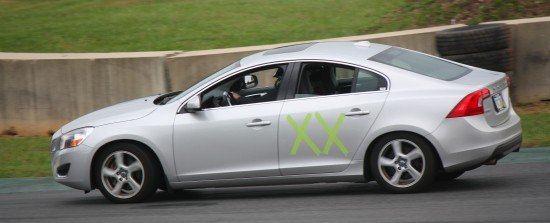


















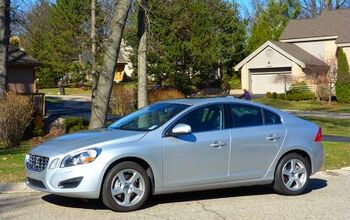
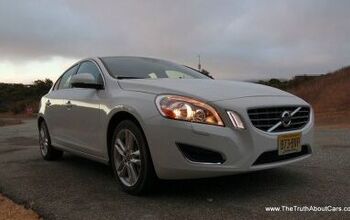

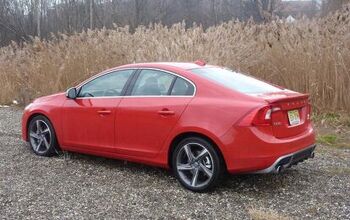
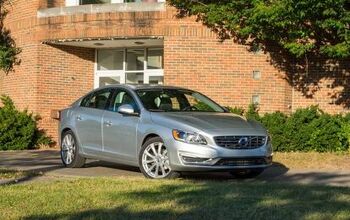










Comments
Join the conversation
If this is worse than an F10 328i, it must be pretty bad (although I don't mind the styling). Even BMW loyalists Car and Driver, while still declaring it a comparo winner, said that an e90 was better and would have won the test had it participated (and this e46 330i owner says that's better than all) Your two best choices for a fully warrantied car in this price range are a G37 or a CPO e90 BMW. An impressive feat for Infiniti considering the age of that platform.
The most surprising thing about this to me is that you can get a Volvo from a rental spot. If I could do that, I would fly everywhere. That aside, Volvo sedans aren't what the brand is about (even though they sold quite a bit in their glory days), but unfortunately, what the brand IS about isn't popular in the US. I agree with Marko above.